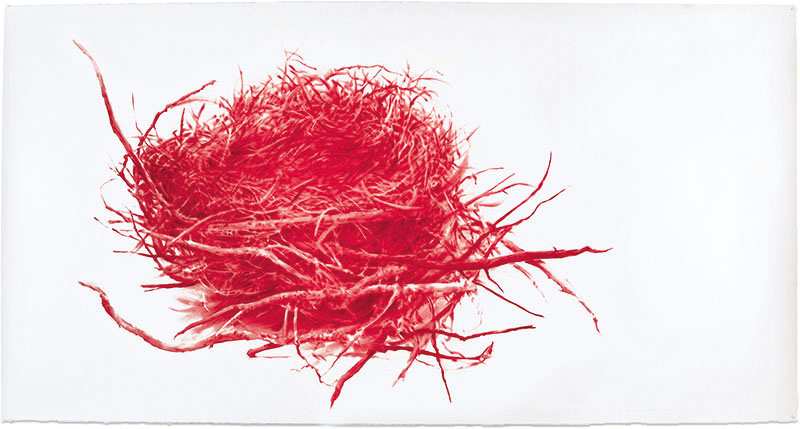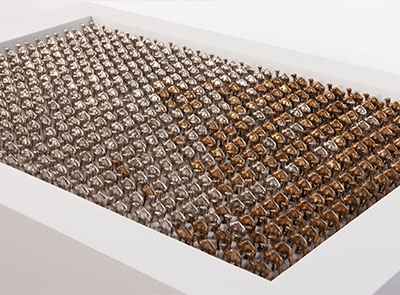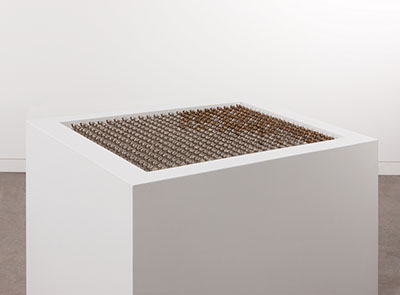James Drake "Red Nest" / Tai Pomara "Camels"

Over the stretch of my time looking at and thinking about art that I see and like to the point that it sticks with me in such a way that the image just won't leave me, makes me ask why? Why is it that an image becomes so powerful that it becomes part of my psyche. There are two such works of art that I would like to mention here. One of them is a big pastel on paper drawing by James Drake, an image of a red bird nest titled "Red Nest," done in 2010. When I first saw this artwork, it was hanging on a wall at the Station Museum of Contemporary Art in Houston, Texas. I stood for what seemed like an eternity in front of it, marveling at the depth of freedom in an artist's ability to express with such an unencumbered force his visual will. Visual will is exercised in two ways, one in the technique of process, and the other in intent of statement. Being a master craftsman will not in and of itself give an artist the ability to be a great artist. Making great art has to be done through the second part as it relates to intent and content. I started looking at this big drawing in relation to "what is it—and what does it mean." A nest by its very nature is female, the nest building process is careful and deliberate and carries with it reality of intent. Nests by their placement in nature are made to fit within a certain environment. Drake's nest is blood red, carrying with it a much deeper reality, one that is steeped in the intuitive realm of what evolutionary history has marked as "wise blood." I left the exhibition mesmerized by Drake's focused intent. The total freedom between his mind/eye and hand connection rose to the magnitude of a true master. I thought at the time that "Red Nest" was one of the best drawings I had ever seen. Now I believe it is "the best" drawing I have ever seen.

The second such art work is one by Tai Pomara. This piece is a sculpture in the form of what seems like a legion of camels in formation on the march. Everything about this sculpture spreads the reality of what camels represent in the world. For thousands of years this animal represented the very backbone of the workings of a vast region stretching from north Africa to India. This sculpture expresses the full metaphor for the thousands of years that human battles based on blind prejudice were fought over and over again, all the while the camels moving in recessed waves across the never ending sands of time. I feel that given the reality of human behavior, the wave of camels is like the waves in the windblown sand, steady in the natural sense. This sculpture becomes the heart of being for the world as it looks at a region's history, which in every way becomes the history of humanity itself. I believe this sculpture represents a powerful statement and may very well be one of the most important statements of the last fifty years.

James Surls currently lives and works in Carbondale, Colorado and Splendora, Texas.
